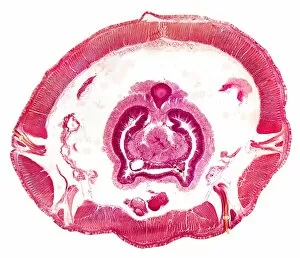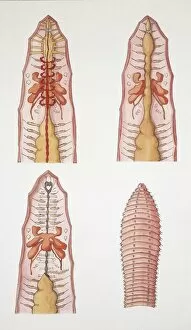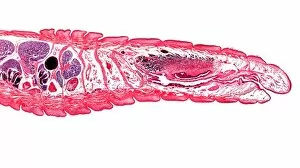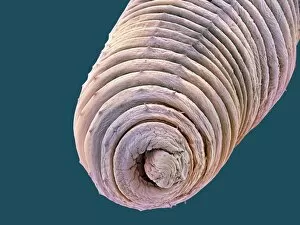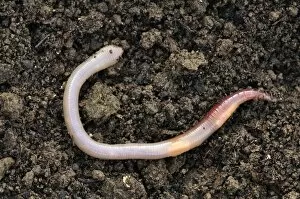Lumbricus Terrestris Collection
"Lumbricus terrestris: The Unsung Heroes of the Soil" Earthworms, scientifically known as Lumbricus terrestris
For sale as Licensed Images
Choose your image, Select your licence and Download the media
"Lumbricus terrestris: The Unsung Heroes of the Soil" Earthworms, scientifically known as Lumbricus terrestris, play a vital role in maintaining the health and fertility of our soil. With their characteristic long bodies and segmented structure, these small common earthworms are often found burrowing deep into the ground. In a close-up view, we can see how these earthworms benefit the soil. Their constant movement helps to aerate and loosen compacted soil, allowing for better water infiltration and root growth. As they slither through the soil and twigs, they create tunnels that improve drainage and prevent waterlogging. Illustrations show us four lumbricus terrestris worms at work. These creatures tirelessly break down organic matter such as fallen leaves or decaying plant material, effectively recycling nutrients back into the soil. This process enhances its overall fertility while promoting healthy microbial activity. One captivating image captures a child's hand gently holding an earthworm—a reminder of how these humble creatures spark curiosity in young minds about nature's wonders. Another image reveals a colored scanning electron microscope (SEM) view of an earthworm's head—an intricate marvel showcasing their unique sensory organs. Lumbricus terrestris is truly remarkable in its ability to contribute to ecological balance. Whether it's enriching garden beds or aiding agricultural fields' productivity, their presence is invaluable for sustainable land management practices worldwide. So let us appreciate these unsung heroes beneath our feet—the common earthworms—Lumbricus terrestris—for without them, our soils would be devoid of life-giving nourishment needed for plants to thrive.



